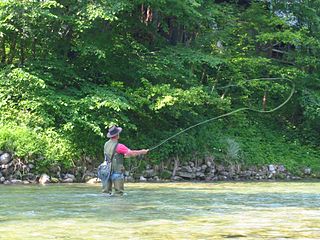 W
WFly fishing is an angling method that uses a light-weight lure—called an artificial fly—to catch fish. The fly is cast using a fly rod, reel, and specialized weighted line. The light weight requires casting techniques significantly different from other forms of casting. The flies may resemble natural invertebrates, baitfish, or other food organisms.
 W
WAmadou is a spongy material derived from Fomes fomentarius and similar fungi that grow on the bark of coniferous and angiosperm trees, and have the appearance of a horse's hoof. It is also known as the "tinder fungus" and is useful for starting slow-burning fires. The fungus must be removed from the tree, the hard outer layer scraped off, and then thin strips of the inner spongy layer cut for use as tinder.
 W
WAmerican Angler is a magazine dedicated to the subject of fly fishing, with an emphasis on cold water fisheries, published six times a year. It bills itself as a "how to, where to" magazine focusing on technical fly-fishing informational articles and explorations of new fishing locations. It is an asset of Morris Communications, which also owns publications such as Gray's Sporting Journal, Fly Tyer, and the soon-to-be-defunct Saltwater Fly Fishing. Collectively, these magazines are referred to as the "Morris Group." American Angler is the third-largest fly-fishing magazine in terms of circulation, with approximately 40,000 subscribers, following Fly Fisherman and Fly Rod and Reel. It is the only magazine among those to use "perfect binding" instead of stapled pages.
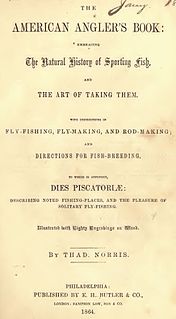 W
WThe American Angler's Book Embracing the Natural History of Sporting Fish and the Art of Taking Them with Instructions in Fly-Fishing, Fly-Making, and Rod-Making and Directions for Fish-Breeding, to which is appended Dies Piscatoriae Describing Noted Fishing-Places, and The Pleasure of Solitary Fly-Fishing is an early American angling book by Thaddeus Norris (1811-1877) first published in 1864. Norris was known as Uncle Thad and commonly referred to in American angling history as "The American Walton".
 W
WThe American Museum of Fly Fishing is a museum in Manchester, Vermont, United States, that preserves and exhibits artifacts related to American angling.
 W
WAmwell Magna Fishery is located on the River Lea at Amwell which is 1.5 miles (2.4 km) south of Ware in Hertfordshire, southern England.
 W
WAn artificial fly or fly lure is a type of fishing lure, usually used in the sport of fly fishing. In general, artificial flies are an imitation of natural food sources that fly fishers present to their target species of fish while fly fishing. Artificial flies are constructed by fly tying, in which furs, feathers, thread or any of very many other materials are tied onto a fish hook. Artificial flies may be constructed to represent all manner of potential freshwater and saltwater fish prey to include aquatic and terrestrial insects, crustaceans, worms, baitfish, vegetation, flesh, spawn, small reptiles, amphibians, mammals and birds, etc. Effective artificial fly patterns are said to be killing flies because of their ability to put fish in the creel for the fly fisher. There are thousands of artificial fly patterns, many of them with descriptive and often idiosyncratic names.
 W
WDan Bailey was a fly-shop owner, innovative fly developer and staunch Western conservationist. Born on a farm near Russellville, Kentucky, Bailey is best known for the fly shop he established in Livingston, Montana in 1938. Dan Bailey's Fly Shop is still in business.
 W
WA bamboo fly rod or a split cane rod is a fly fishing rod that is made from bamboo. The British generally use the term "split cane." In the U.S., most use the term "bamboo." The "heyday" of bamboo fly rod production and use was an approximately 75-year period from the 1870s to the 1950s when fiberglass became the predominant material for fly rods. Nevertheless, bamboo fly rods made from skilled makers continue to be 'state-of-the-art' in performance and are cherished and revered by their owners.
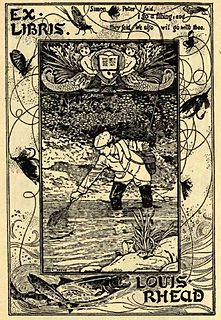 W
WThis general annotated bibliography page provides an overview of notable and not so notable works in the English language regarding the sport of fly fishing, listed by year of first publication. Although not all the listed books are devoted exclusively to fly fishing, all these titles contain significant fly fishing content. The focus of the present page is on classic general texts on fly fishing and its history, together with notable public or university library collections dedicated to fly fishing.For readability, the bibliography is contained in three separate lists. For books primarily dedicated to fly tying, fly tackle, regional guides, memoirs, stories and fly fishing fiction see: Bibliography of fly fishing . For species related fly fishing literature see: Bibliography of fly fishing .
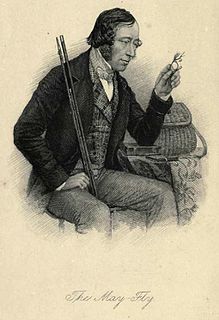 W
WThis annotated bibliography is intended to list both notable and not so notable works of English language, non-fiction and fiction related to the sport of fly fishing listed by year published. Although 100% of any book listed is not necessarily devoted to fly fishing, all these titles have significant fly fishing content. Included in this bibliography is a list of fly tying, fly tackle, regional guides, memoirs, stories and fly fishing fiction related literature.For readability, the bibliography is contained in three separate lists. For classic general texts, history of fly fishing and fly fishing library collections see: Bibliography of fly fishing For species related fly fishing literature see: Bibliography of fly fishing
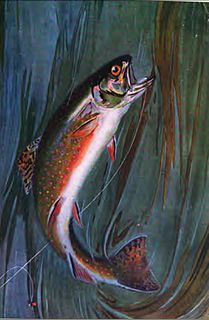 W
WThis annotated bibliography is intended to list both notable and not so notable works of English language, non-fiction and fiction related to the sport of fly fishing listed by year published. Although 100% of any book listed is not necessarily devoted to fly fishing, all these titles have significant fly fishing content. Included in this bibliography is a list of species related fly fishing literature.For readability, the bibliography is contained in three separate lists. For classic general texts, history of fly fishing and fly fishing library collections see: Bibliography of fly fishing For fly tying, fly tackle, regional guides, memoirs, stories and fly fishing fiction see: Bibliography of fly fishing
 W
WBlacker's Art of Fly Making - comprising angling and dyeing of colours with engravings of Salmon and Trout flies shewing the process of the gentle craft as taught in the pages with descriptions of flies for the season of the year as they come out on the water is a work of fly tying literature with significant fly fishing content written by William Blacker, a London tackle dealer and first published in London in 1842 by George Nichols. The 1842 and 1843 editions were only 48 pages while, the 1855 edition was considerably expanded by Blacker with hand-painted, colored illustrations and 252 pages.
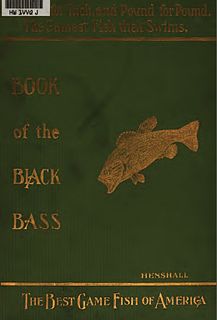 W
WBook of the Black Bass - Comprising Its Complete and Scientific and Life History with a Practical Treatise On Angling and Fly Fishing and a Full Description of Tools, Tackle and Implements is a work of angling and fly fishing literature on the subject of Black Bass written by James A. Henshall, M.D., a mid-western medical doctor and first published in Cincinnati in 1881 by Robert Clarke & Co.
 W
WA Book on Angling – Being a complete treatise on the art of angling in every branch is a work of angling literature with significant fly fishing content written by Francis Francis, angling editor to The Field and published in London in 1867 by Longmans, Green and Company.
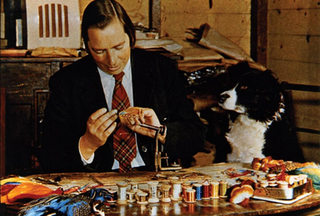 W
WRosina Megan Boyd was a British fly tyer most noted for her Atlantic salmon flies. She lived most of her adult life in a small cottage in Kintradwell, near Brora, Scotland. She was awarded the British Empire Medal in 1971.
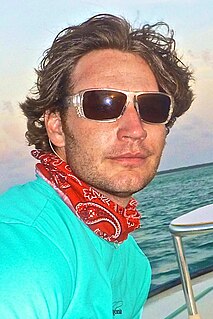 W
WAndrew "Drew" Chicone is an American author, saltwater fly designer, fly fisherman and fly casting instructor. He writes books and magazine articles demonstrating how to tie saltwater fly patterns, primarily focused on warm-water fish and fly fishing from standup paddleboards.
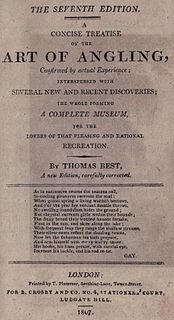 W
WA Concise Treatise on the Art of Angling- Confirmed by Actual Experiences and Minute Observations to Which is Added the Compleat Fly-Fisher is a fly fishing book written by Thomas Best, first published in London in 1787.
 W
WDry-Fly Fishing in Theory and Practice (1889) is British author and angler Frederic M. Halford's second and most influential book on dry fly fishing. It followed Floating Flies and How to Dress Them (1886) and this pair of books initiated some 40 years of a rigid, and sometimes dogmatic school, the Halfordian school, of dry fly fishing, especially on English chalk streams. The work also played a significant role in the development of dry-fly fishing in America.
 W
WFavorite Flies and Their Histories - With many replies from practical anglers to inquiries concerning how, when and where to use them-Illustrated by Thirty-two colored plates of flies, six engravings of natural insects and eight reproductions of photographs is a fly fishing book written by Mary Orvis Marbury published in Boston in April 1892 by Houghton Mifflin. It was considered by most fly fishers as the standard reference on flies in its era.
 W
WFloating Flies and How to Dress Them - A Treatise on the Most Modern Methods of Dressing Artificial Flies for Trout and Grayling with Full Illustrated Directions and Containing Ninety Hand-Coloured Engravings of the Most Killing Patterns Together with a Few Hints to Dry-Fly Fishermen is a fly fishing book written by Frederic M. Halford published in London in April 1886 by Sampson Low. A deluxe edition on large paper sold out before publication and the trade edition of 500 nearly so.
 W
WFly casting is a competitive variation of fly fishing found in sport fishing and fishing tournaments. This type of sports fishing originated in the Fourteenth Century. The modern version of the sport is supervised by the International Casting Sport Federation (ICSF), which was founded in 1955 and as of April 2014 has member associations in 31 countries.
 W
WThe Fly Casting Analyzer is a research tool for understanding fly casting, developed in 2003 by Bruce Richards of Scientific Anglers and Noel Perkins, a professor of engineering at the University of Michigan.
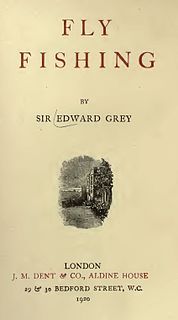 W
WFly Fishing, first published in 1899 by English author and diplomat Edward Grey, 1st Viscount Grey of Fallodon (1862–1933), is a book about fly fishing English chalk streams and spate rivers for trout and salmon. It includes reminisces about the author's fly fishing experiences on Hampshire rivers. The book was in print for nearly 50 years and has been extensively reprinted in the 21st century.
 W
WFly Fishing: Memories of Angling Days, also published as Fly Fishing by J. R. Hartley, is a fishing book by British angling author Michael Russell under the pseudonym of J. R. Hartley. It was published by Stanley Paul in 1991 and was intended to capitalise on the popularity of the J. R. Hartley fictional character.
 W
WTheFlyStop is a retail fly shop and e-commerce business specializing in fly fishing, hunting and sporting goods. Founded in Pennsylvania in 2006, it is an online seller of fishing flies in the United States.
 W
WFly Tyer is an American magazine dedicated to the subject of fly tying, the art of tying materials to a hook for the purposes of fly fishing. Published four times a year, Fly Tyer is currently the largest fly-tying magazine in terms of circulation. It employs "perfect binding" instead of stapled pages, and usually features a close-up image of a fly on its cover.
 W
WFly tying is the process of producing an artificial fly used by fly fishing anglers to catch fish.
 W
WThe Fly-Fisher's Entomology, Illustrated by Coloured Representations of the Natural and Artificial Insect and Accompanied by a Few Observations and Instructions Relative to Trout-and-Grayling Fishing, first published in 1836 by Alfred Ronalds (1802–1860), was the first comprehensive work related to the entomology associated with fly fishing. Although the work was Ronalds' only book, it was published in 11 editions between 1836 and 1913 and has been extensively reprinted in the last 100 years.
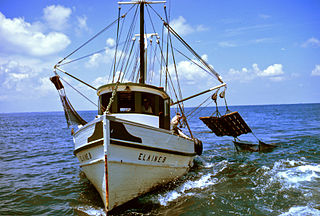 W
WThe Golden Triangle is an informal designation for a region renowned as one of the premier fly fishing locations in the United States. The region is named for its approximate boundaries that form an equilateral triangle having an apex at Glacier National Park and encompassing Yellowstone National Park and the eastern portion of Idaho. Superior fly fishing also exists in the surrounding areas of the Rocky Mountains in Idaho and western Montana.
 W
WGray's Sporting Journal is a magazine dedicated to the pursuit of outdoor recreation, with an emphasis on hunting and fishing. It is a consciously literary publication, using a "blind reader" to select articles, poems, and stories for publication. The blind reader receives only the text of the submitted work, not the name of the author, thus theoretically preventing publication of works based on fame only.
 W
WJohn Horrocks was the founder and innovator of modern European fly fishing.
 W
WMinor Tactics of the Chalk Stream and Kindred Studies is a fly fishing book written by G. E. M. Skues published in London in 1910. Minor Tactics was Skues's first book and set the stage for his ascendancy as the inventor of nymph fishing for trout.
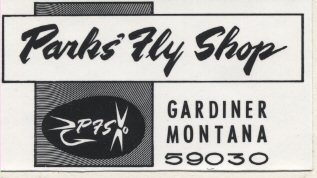 W
WParks' Fly Shop is a fly shop and licensed fly fishing outfitter in Gardiner, Montana. In business since 1953, the shop located at 202 2nd Street between Main and Stone is the oldest business in Gardiner under continuous family ownership.
 W
WThe reach cast is a casting technique used in fly fishing. The reach cast involves casting the fly lure over flowing water, such as a stream, and then just before the fly lands, moving the arm and fly rod in the upstream direction to arrange the fishing line so that it produces less apparent drag in the water. The technique allows the lure to more closely resemble a free-floating insect, resulting in greater chance of it being taken by a fish. Reach casting also allows an experienced caster to pitch curved casts in order to get the lures into difficult places.
 W
WThe Salmon Fly - How to Dress It and How to Use It is a fly fishing book written by George M. Kelson published in London in 1895 by Messers. Wyman & Sons, Limited. This Victorian guide to fly fish tying built up the illusion that angling for salmon required feathers of exotic bird species.
 W
WTenkara fly fishing is a simple type of fishing practiced in Japan. Primarily used for mountain stream trout fishing, tenkara is one of the most popular methods of angling among fresh-water mountain anglers in Japan.
 W
WA tube fly is a general tying style of artificial fly used by fly anglers. Tube flies differ from traditional artificial flies as they are tied on small diameter tubes, not hooks. Tube flies were originated in Aberdeen, Scotland by fly-dresser Minnie Morawski for Atlantic salmon anglers around 1945. Tube flies were designed to improve hooking success and to prevent damage to complex and expensive salmon flies by the teeth of hooked salmon. Tube flies have been widely adapted to fly patterns for a variety of cold water and warm water species and are extremely popular for steelhead and salmon in the Pacific Northwest and northeast United States, as well as saltwater species along the Atlantic, Florida and Gulf Coasts. They are widely used in European waters for Atlantic salmon, sea trout and pike.
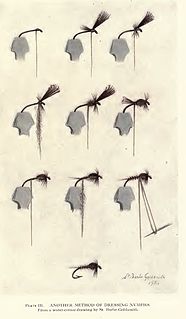 W
WThe Way of a Trout with a Fly and Some Further Studies in Minor Tactics is a fly fishing book written by G. E. M. Skues published in London in 1921. This was Skues's second book after Minor Tactics of the Chalk Stream (1910).